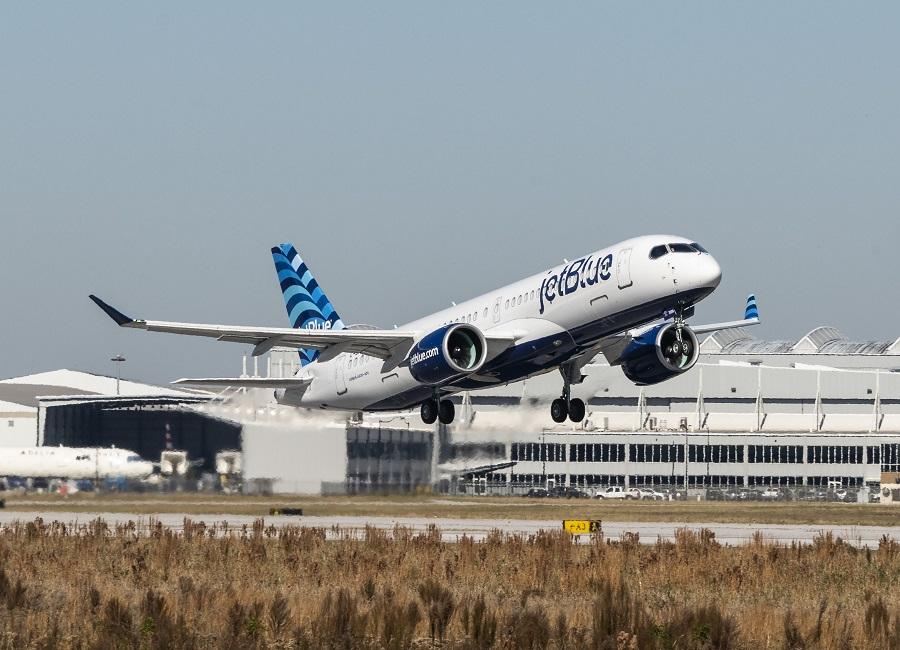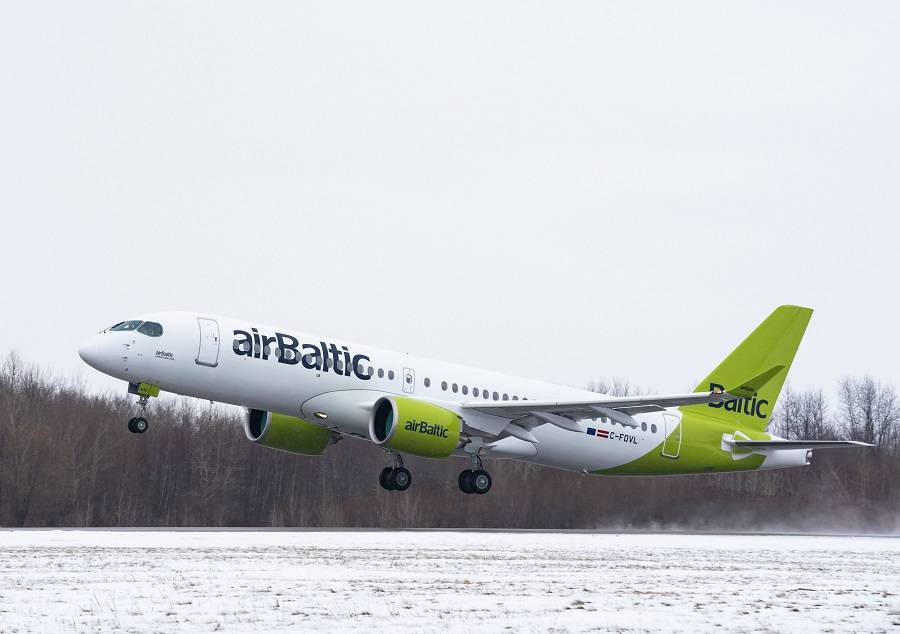Airbus announced an increase for the maximum take-off weight (MTOW) of their A220-300, amounting to a 200-mile longer range.
In a recent interview, Airbus VP of single-aisle marketing Antonio Da Costa announced some pleasant news for A220-300 users:
“As we were running through the numbers and looking through the reserve factors on the structure – we actually found that there was additional margin available in the structure of the [A220-300].”

That extra margin amounts to one more tonne. This brings the MTOW of the Airbus A220-300 up from 69.9 to 70.9 tonnes. And this comes after the aircraft got a 2.3-ton MTOW increase in 2019. It had shared that increase with its smaller sibling, the A220-100. This time the increase only affects the larger variant. Airbus will begin offering this increase later in the year.
The move offers some more hints about the design’s as yet-untapped potential. We have already seen how with the A220-300, Airbus has something that Boeing has no answer for. However it’s easy to forget that this aircraft’s design purpose was to ‘steal’ market share away from the Airbus A320 series. Of course this was back when it had its former identity, as the Bombardier Cseries.

The A220-300 And An Airbus Family Feud
And this wasn’t all. Bombardier announced just the CS100 and CS300 models – now Airbus A220-100 and A220-300 respectively. However, a stretch was always in the picture. As we have seen, some customers of the A220-300 would really like to see an A220-500 variant, as well. And Bombardier designed the aircraft with a wing that could work with such a stretch.
Of course it’s not that simple. A longer A220 could require uprated engines, and/or other enhancements. It would also compete against Airbus’ A320neo. Effectively, the current A220-300 has already marginalized the A319neo. In any case, the design’s potential for such a stretch may help explain the A220-300’s latest gains in MTOW and range.

That additional ton of fuel translates to an increase in range for the Airbus A220-300 from 3,350nm to 3,550nm. The change isn’t really transformative. Even without it, the A220-300 has very long legs for its size. But Air Canada or JetBlue could use their aircraft for more ‘thin’ routes to Central or South America, for example. Air Baltic is already expanding its network beyond the confines of Europe.
And of course Air France, that will use the Airbus A220-300 to replace their entire A320 family, want all the versatility they can get. Still, they would much rather prefer an A220-500, if possible. And then there are potential new customers. Israir is reportedly contemplating a purchase of the jet. Given their position and likely routes, the MTOW increase should help.

Incidentally, this MTOW increase means that the A220-300 now has a longer range than the A320neo… by 50nm. It’s still 200nm below the A319neo, but that race has already been decided.




1 comment
Andre T
I read this and it states BA’s intent for Cseries was to compete with A320 family. I don’t think that was original intent. I remember being told by BA engineer, they were designing the aircraft for niche market that neither AB or Boeing had aircraft. They were leveraging the small size larger than regional but smaller than a320 and b737 market, the range, fuel efficiency, and especially the quietness of aircraft targeting an airport market more limited to regional having more noise restrictions. Looking back, BA was designing a new point to point intent aircraft that serves the smaller market airports ideal for low cost carriers. But they must have had the foresight that this would grow into the larger markets but don’t think it was the primary intent. I really think they shot for market neither AB or Boeing covered or covered well.